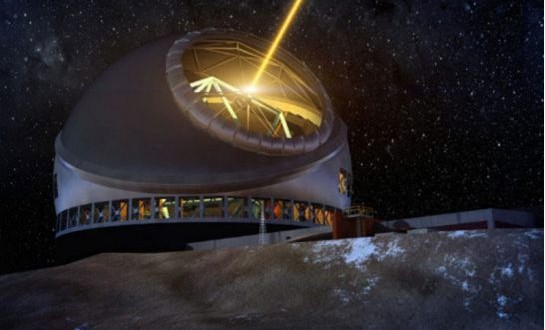Canada will help build a telescope that, when completed, will be the world’s most powerful.
Prime Minister Stephen Harper announced $243.5 million in funding for project on Monday evening. The investment will give Canadian astronomers access to an instrument with unprecedented power to scour the cosmos.
The Thirty Meter Telescope—so named for the diameter of its primary mirror—promises sharper images than the Hubble space telescope and will help astronomers working on some of the greatest scientific mysteries to study the outer reaches of the known universe.
“Canada is already recognized for excellence in astronomy and astrophysics. Our prominence in these fields owes a great deal to federal investments in these important tools — world-class observatories, telescopes and institutions,” said Arvind Gupta, UBC president and vice-chancellor.
“This commitment to the Thirty Meter Telescope project will help ensure Canadian scientists remain at the forefront of this field and further advance Canada’s position as a world leader in research and innovation,” Gupta said.
Canada’s investment in the U.S. $1.5 billion project secures its role as a participant in an international partnership. Other partners in the project are Japan, China, India, as well as the California Institute of Technology and the University of California from the United States.
“This investment guarantees Canadian scientists’ access to what will be one of the most advanced pieces of astronomical research equipment,” said John Hepburn, vice president, research and international at UBC.
UBC astronomy professor Paul Hickson has been closely involved with the TMT project since its inception, serving terms as Chair of its Science Advisory Committee, and Project Scientist for the adaptive optics system.
“Key components of the telescope will be designed and built in Canada, including the observatory structure and the advance adaptive optics technology that enables the telescope to achieve its unprecedented sensitivity and image clarity,” said Hickson about the important contributions Canadians will make to advance the project.
Agencies/Canadajournal
 Canada Journal – News of the World Articles and videos to bring you the biggest Canadian news stories from across the country every day
Canada Journal – News of the World Articles and videos to bring you the biggest Canadian news stories from across the country every day



